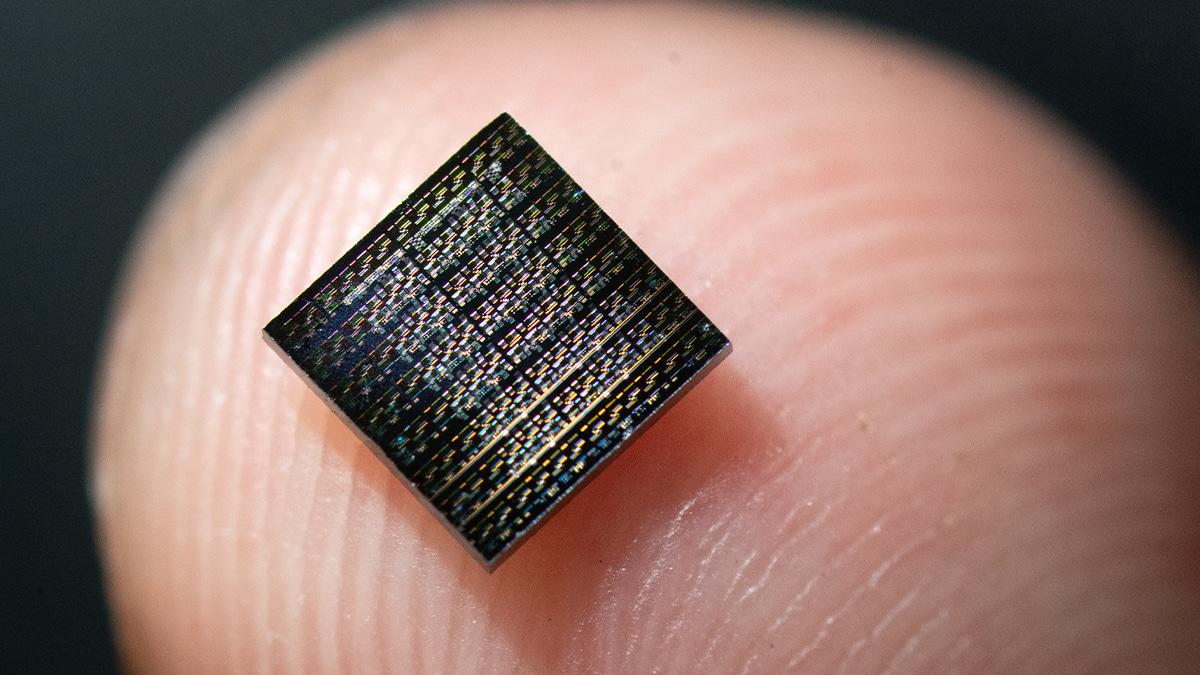Ion-Based Memristive Devices Unlock Compact and Energy-Efficient Neuromorphic Computing
Published in Electrical & Electronic Engineering and Materials

In this era of rapidly expanding artificial intelligence, the explosive growth of AI systems is consuming vast computational resources with enormous energy demand, raising serious concerns about sustainability. Neuromorphic computing represents a promising direction that draws inspiration from the human brain to realize energy-efficient artificial intelligence and to address this energy crisis1. An important task within neuromorphic computing is to develop hardware components that can emulate the functions of biological neural elements with high fidelity, which can then be used to construct artificial intelligence systems by reproducing the working mechanisms of biological neural networks. On the other hand, the artificial components must be highly compact, since bulky circuits are impractical given the enormous number required to emulate the brain. In our research during the recent decade, we identified a class of memristive devices that shows great potential for fulfilling this purpose. It is called ion-based memristive devices (IMDs)2. Besides, for the first time, we propose and demonstrate utilizing mobile ions to faithfully and efficiently emulate biological components and conduct neuromorphic computing.
Diffusive Memristor as a Type of Ion-Based Memristive Devices (IMDs)
Memristive devices refer to microscale electronic components that can be programmed to various analog resistance states. Their core structure typically consists of a dielectric layer whose conductance can be modulated by an external voltage or current stimulus. Many materials have been explored for the dielectric layers of memristive devices3. Among them, a particular class containing mobile ions within the dielectric layer, named IMDs, exhibits unique properties2. The resistance of these devices changes as the internal mobile ions migrate under an external electric field, altering the local composition and, consequently, the local conductivity. Due to the large degree of freedom for ionic migration, these devices often display complex dynamic behaviors. This characteristic coincides with the operational principles of biological neural systems, which also rely on ion movement, but inside biofluids. Inspired by this similarity, our group started about a decade ago to investigate the potential of utilizing mobile ions to more faithfully emulate biological neural components and functions.
Our group initiated this research direction with a specific type of IMDs known as the diffusive memristor4. Diffusive memristors are typically composed of insulating dielectric materials doped with Ag or Cu5. It exhibits a volatile resistance change under electrical bias, which gradually decays back to its initial state once the bias is removed. Through simple material stacking and microfabrication processes, the devices show fast switching behavior with clear hysteresis loops. Experimental observations suggest that the switching process involves the formation and dissolution of metallic ion filaments 4,6. Various simulation studies further reveal that the device operation can be described as a nonlinear dynamic system7,8. These unique properties make diffusive memristors highly promising candidates for emulating neuronal dynamics.
Emulation of Synapses Using Diffusive Memristors
The initial attempt to build neural components using diffusive memristors was directed toward constructing compact synapses for spiking neural networks. In biological systems, synaptic weights are continuously updated in real time based on the timing of spikes from pre- and post-neurons. To emulate this adaptive and dynamic process with CMOS circuits, complex architectures are generally required9. In our previous work, we successfully demonstrated a compact artificial synapse composed of a diffusive memristor and a drift memristor (a type of IMDs with nonvolatile resistance change)4. The synaptic weight in this structure can be dynamically updated in response to spike signals applied from the two sides, enabled by the intrinsic switching dynamics of the diffusive memristor.
Emulation of Neurons Using Diffusive Memristors
Following the successful realization of artificial synapses, we explored whether diffusive memristors could also be employed to build compact artificial neurons. Many previous studies have utilized diffusive memristors as threshold switches with hysteresis to implement neuron-like behavior2. However, these approaches largely neglect the intrinsic ionic dynamics of the devices, resulting in behaviors that are overly simplified compared with biological neurons.
Owing to the ion dynamics in diffusive memristors, more complex biological neural functions can be emulated. The growth and dissolution of ion filaments within the dielectric layer can represent the leaky integration process of biological neurons, the residual ion filaments caused by material nonuniformity can emulate intrinsic plasticity or short-term memory in biological neurons, the threshold switching process can realize the firing behavior of biological neurons. These findings inspired us to explore the possibility of fully exploiting these physical properties to design a highly compact and efficient spiking neuron.
After several iterations of design evolution, we developed a spiking artificial neuron consisting of only one diffusive memristor, one transistor, and one resistor, which are introduced in our new paper10. This artificial neuron integrates six essential functions commonly required in spiking neural network systems: leaky integration, threshold firing, cascaded connection, refractory period, intrinsic plasticity, and stochasticity. The ion migration within the diffusive memristor plays the dominant role in achieving leaky integration, threshold firing, intrinsic plasticity, and stochasticity. The transistor enables cascaded connections and provides a parasitic capacitance essential for the refractory period. Furthermore, we demonstrated that the refractory period of the neuron can be effectively tuned by adjusting the value of the resistor in this component.
Outlook
For decades, computation in electronic devices has relied primarily on the manipulation of electrons within CMOS circuits. IMDs, however, introduce a fundamentally different paradigm, computation through ion migration, which coincides with the operational mechanism of biological intelligence and enables efficient bio-inspired computing.
Our earlier demonstration of artificial synapses based on diffusive memristors revealed the feasibility of utilizing the intrinsic dynamics of IMDs to construct neuromorphic components. The present work on diffusive-memristor-based artificial neurons further strengthens this concept, demonstrating that a deeper understanding of the ionic dynamics in memristive systems can lead to the realization of more advanced and biologically relevant functionalities. These results open new opportunities for developing compact and efficient neuromorphic hardware and advancing the frontier of brain-inspired computing.
References
- Mehonic, A. & Kenyon, A. J. Brain-inspired computing needs a master plan. Nature 604, 255–260 (2022).
- Zhao, R. et al. Memristive Ion Dynamics to Enable Biorealistic Computing. Chem. Rev. 125, 745–785 (2025).
- Wang, Z. et al. Resistive switching materials for information processing. Nat Rev Mater 5, 173–195 (2020).
- Wang, Z. et al. Memristors with diffusive dynamics as synaptic emulators for neuromorphic computing. Nature Materials 16, 101–108 (2017).
- Wang, Z. et al. Threshold Switching of Ag or Cu in Dielectrics: Materials, Mechanism, and Applications. Advanced Functional Materials 28, 1704862 (2018).
- Jiang, Y. et al. Spontaneous Threshold Lowering Neuron using Second-Order Diffusive Memristor for Self-Adaptive Spatial Attention. Advanced Science 10, 2301323 (2023).
- Wang, T. et al. A Faithful and Compact Diffusive Memristor Model. IEEE Transactions on Circuits and Systems for Artificial Intelligence 141–148 (2024)
- Zhuo, Y. et al. A Dynamical Compact Model of Diffusive and Drift Memristors for Neuromorphic Computing. Advanced Electronic Materials 8, 2100696 (2022).
- Chicca, E., Stefanini, F., Bartolozzi, C. & Indiveri, G. Neuromorphic Electronic Circuits for Building Autonomous Cognitive Systems. Proceedings of the IEEE 102, 1367–1388 (2014).
- Zhao, R. et al. A spiking artificial neuron based on one diffusive memristor, one transistor and one resistor. Nat Electron 1–11 (2025)
Follow the Topic
-
Nature Electronics

This journal publishes both fundamental and applied research across all areas of electronics, from the study of novel phenomena and devices, to the design, construction and wider application of electronic circuits.


Please sign in or register for FREE
If you are a registered user on Research Communities by Springer Nature, please sign in